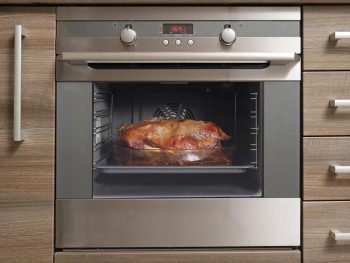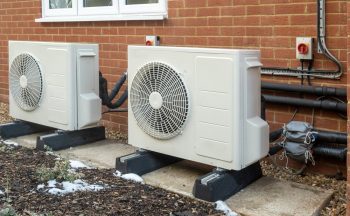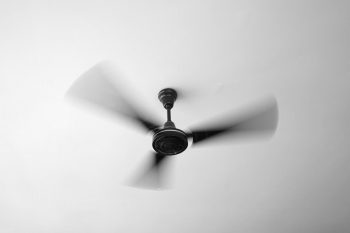
The dry mode function on an air conditioner, often represented by a symbol resembling a water droplet, provides a unique way to control humidity levels in your home or office. But as with any appliance feature, knowing when and how to use it is key to optimizing its benefits. So, when should you run your AC in dry mode?
You should run your AC in dry mode when the conditions are humid but not too hot, such as during spring or fall seasons, or on rainy days when humidity levels rise. Dry mode is designed to reduce humidity levels in your space without significantly cooling it. However, it’s not recommended to use dry mode for extended periods; one to two hours is usually sufficient. Avoid using dry mode on hot summer days when cooling is the primary need.
Understanding Dry Mode
Dry mode is designed to reduce humidity levels in a room without significantly cooling the space. It works by sucking in the moist air from the room, removing excess moisture via the evaporator coil, and releasing the dry air back into the room. This function is particularly useful when the conditions are humid and “sticky,” but not too hot, such as on days with a tropical feel or when it’s been raining or about to rain.
When you switch your air conditioner to dry mode, the unit measures the room temperature and decides at what temperature it will cycle off. It then regulates the room/return air temperature and the cooling coil/heat exchanger temperatures. Fan and compressor speeds are controlled to maintain the desired temperature differences between the return air and the cooling coil temperature, thereby controlling the humidity of the air being supplied.
Optimal Use of Dry Mode
While dry mode can be a useful feature, it should not be used to remove all humidity from a room. Both excessively humid and excessively dry air can be uncomfortable and cause health issues. Most air conditioning professionals recommend running the AC in dry mode for one to two hours at most.
Dry mode is not recommended for hot summer days when cooling is the primary need. In these situations, it’s better to switch to cooling mode. However, during spring or fall seasons, when humidity is at its peak, or during rainy days when humidity levels rise, using the dry mode can help maintain a comfortable indoor environment.
Energy Consumption in Dry Mode
One of the main benefits of using dry mode is its energy efficiency. The air conditioner’s compressor runs at a slower pace in dry mode, consuming less energy than in regular cooling mode. On average, an air conditioner can use up to several thousand watts per hour in cooling mode, but only several hundred watts per hour in dry mode. This reduction in energy consumption can help lower your energy costs and reduce your home’s carbon footprint.
Health Benefits of Using Dry Mode
Dry mode can also improve the quality of your indoor air. By maintaining optimum humidity levels, it can alleviate common allergy and asthma triggers such as mold, mildew, and dust mites, which thrive in excessively humid environments. It can also help eliminate odors associated with mold, dampness, or mildew in your home.
Downsides of Using Dry Mode
Despite the benefits, there are potential downsides of using dry mode. Over-drying can lead to discomfort and health issues such as dry skin and throat irritations. Dry mode doesn’t cool the air as quickly as cooling mode, so it may not be ideal for extremely hot and humid conditions. In larger spaces or very humid environments, dry mode may not be as effective.
Extending the Lifespan of Your AC
By reducing wear and tear on the system, using dry mode can potentially extend the lifespan of your air conditioner. However, it’s essential to maintain your air conditioner properly, including regular filter replacement and professional maintenance checks, to optimize its performance and extend its lifespan.
In conclusion, the dry mode function on an air conditioner is a useful tool for controlling indoor humidity levels, particularly in humid but not too hot conditions. By understanding how and when to use this feature, you can enhance the comfort of your indoor environment, improve your air conditioner’s energy efficiency, and potentially extend its lifespan.
Frequently Asked Questions
How do I switch my air conditioner to dry mode?
The process may vary depending on the model of your air conditioner. Usually, there’s a button on your remote control labeled as ‘Dry’ or represented by a water droplet symbol. Pressing this button will switch the AC to dry mode.
Can I run my AC in dry mode all day?
It’s not recommended to run an AC in dry mode all day as it could excessively dry out the air, leading to discomfort and potential health issues like dry skin and throat irritations. Most professionals suggest using dry mode for one to two hours at most.
Can dry mode be used in all seasons?
Dry mode is most effective during seasons or weather conditions when the humidity is high but the temperature is not too hot, such as in spring, fall, or during rainy days. It’s not ideal for hot summer days when cooling is the primary need.
Does dry mode work in larger spaces or very humid environments?
Dry mode may not be as effective in larger spaces or extremely humid environments. In such cases, a dehumidifier might be a more effective solution.
Is dry mode only available in newer air conditioner models?
Not necessarily. While it’s more commonly found in newer models, many older air conditioner models also have a dry mode function. Check your user manual or contact the manufacturer to confirm.












